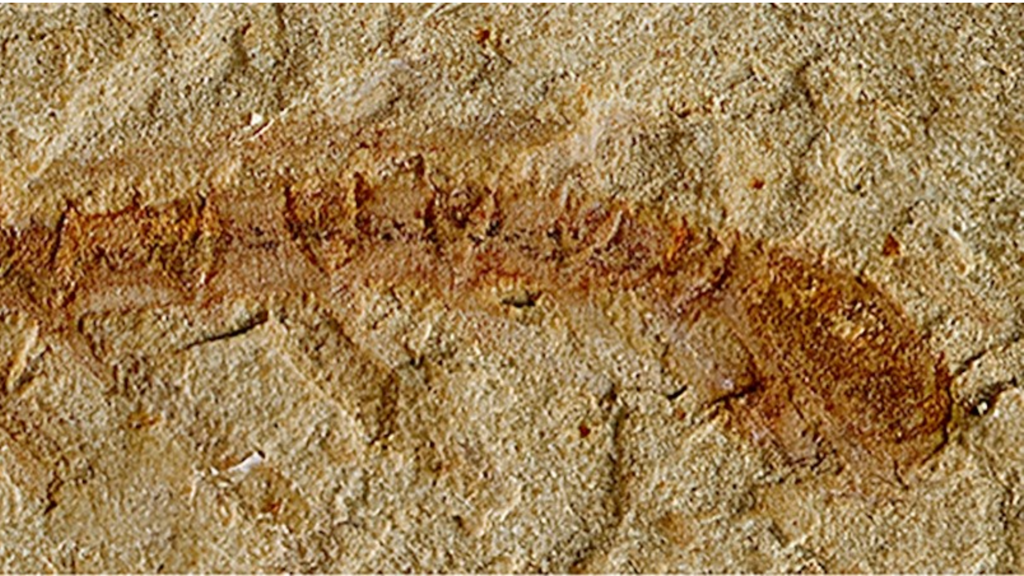Scientists have studied the oldest living brain discovered to date. They then discovered “a common signature” for the production of evolving brains.
What does a 525 million year old brain look like? With such antiquity, it is not a question of a human brain, but rather of another animal existing in that remote time. For works published in ScienceNovember 24, 2022, four paleontologists examined the remains of a lobopodian. This animal, now totally extinct, was an invertor who lived more than 500 million years ago in the seabed.
A recently rediscovered fossil has well-preserved parts of what used to be… his brain. Oldest listed to date. “ Until very recently, it was commonly believed that brains do not fossilize and therefore one would not expect to find a fossil with a preserved brain. », detailed Frank Hirth, one of the authors of the study. ” This animal is so small that you would not even dare to look at it in the hope of finding a brain in it. »
Sample size is only 1.5cm. Indeed, the study was dangerous – the use of radiography was impossible. The paleontologists then mobilized several high-resolution shots, which they superimposed to filter out all wavelengths. So, scientists have produced a map of this 525-million-year-old brain…not without surprises.
“A Common Genetic Plan”
Scientists have compared this specimen with terrestrial arthropods of our time (spiders, centipedes, etc.). The result took them by surprise: it seems that the structure of the nervous-brain system has remained more or less the same for 525 million years. The same pattern was repeated between the Early Cambrian and the present day. Hypotheses assumed that the earliest species of this genus were structurally different over time.
« We have identified a signature common to all brains and how they are formed exulted Frank Hirth. ” We realized that every brain domain and its corresponding features are specified by the same combination of genes, regardless of the species studied. This helps identify a common genetic blueprint for building a brain. »
Whether this same continuity would apply to other animal genera remains to be seen. In any case, this offers a more complete look at certain mechanisms of evolution, the mechanisms of which unfold on the scale of hundreds of millions of years.
Furthermore, for Frank Hirth, this discovery must be put into perspective with the current human disturbances of ecosystems: “ At a time when major geological and climatic events were reshaping the planet, simple marine animals like Cardiodictyon gave rise to the world’s most diverse group of organisms – the euarthropods – which eventually spread to every emerging habitat on Earth. , but who are now threatened by our own ephemeral species. »


